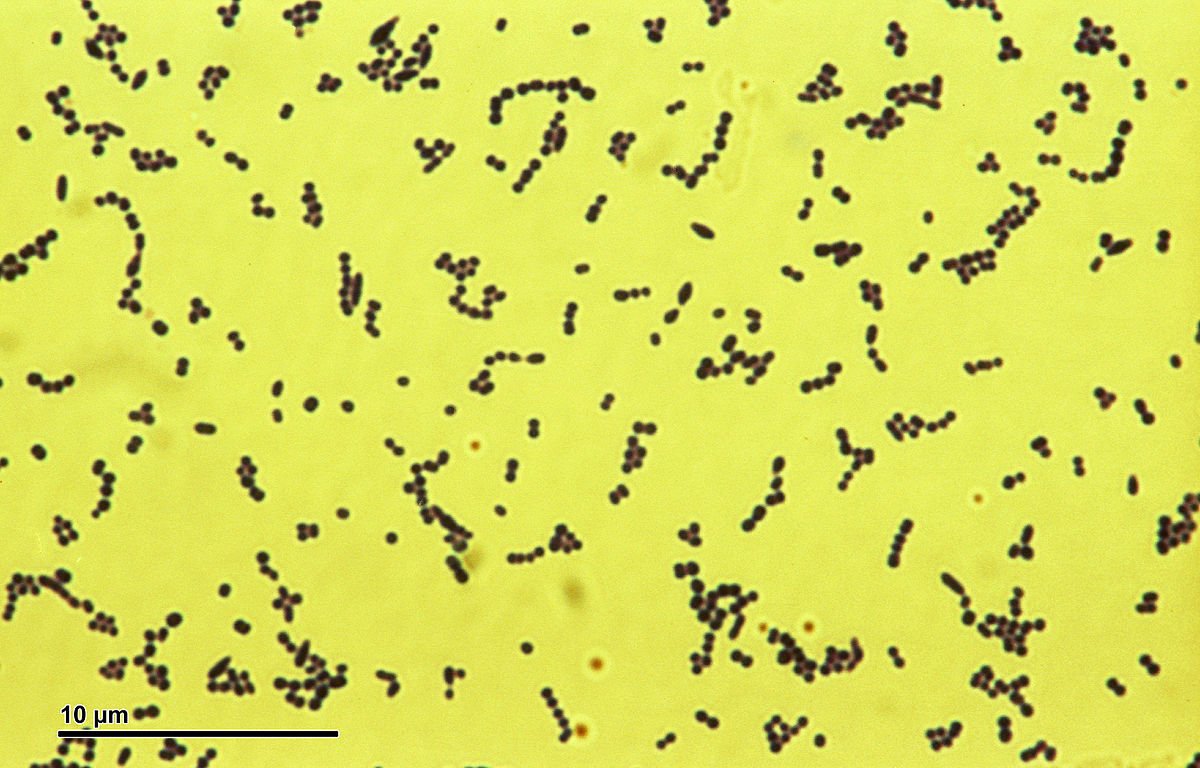Definition of Streptococci – Basic microbiology, parasitology, and immunology; nature, reproduction, growth, and transmission of common microorganisms and parasites in Bangladesh; prevention including universal precaution and immunization, control, sterilization, and disinfection; and specimen collections and examination. Students will have an understanding of common organisms and parasites caused human diseases and acquire knowledge about the prevention and control of those organisms.
Definition of Streptococci
Streptococci are gram-positive cocci arranged in chains or pairs. Some are human pathogens and some are normal flora of human and animals.
or
Streptococcus is a genus of gram-positive coccus (plural cocci) or spherical bacteria that belongs to the family Streptococcaceae, within the order Lactobacillales (lactic acid bacteria), in the phylum Firmicutes

Classification of Streptococci:
On the basis of hemolysis of red blood cells in blood agar media:
1. a-hemolytic: (Incomplete / partial hemolysis)
The bacterial colonies are surrounded by an area of green zone.
Example:
- Streptococcus pneumonia.
- Viridens streptococcus.
2. B-hemolytic: (Complete hemolysis)
The bacterial colonies are surrounded by a clear zone of complete hemolysis.
Example:
- Streptococcus pyogenes
- Streptococcus agalactiae
3. y-hemolytic: (No hemolysis)
Example:
- Streptococcus bovis
On the basis of Oz requirement:
1. Aerobic – e.g. Streptococcus pyogenes.
2. Anaerobic – e.g. Peptostreptococcus.
Morphology of Streptococci:
➤ Shape: They spherical or oval in shape.
➤ Size: Their size ranges between 0.5 to 1.0µm in diameter.
➤ Arrangement: They are arranged in chains. They do not show motility and sporulation and some strains possess capsules.
Streptococcus pyogenes Produce Following Infections:
➤ Respiratory infection: Sore throat (pharyngitis) is the most common disease and also
produces scarlet fever, which causes sore throat and erythematous rash.
➤ Skin and soft tissue infection: The two typical streptococcal infections of skin are erysipelas and impetigo. It also causes infections of wounds and burns.
➤ Genital infection: They are normal inhabitants of female genitalia, which cause puerperal sepsis and other supportive infections. Streptococcus pyogenes cause abscesses of brain, lungs, liver, kidneys and also septicemia and pyemia.
➤ Non-suppurative complication: Acute rheumatic fever and acute glomerulonephritis are two important non-suppurative complications.
Laboratory Diagnosis of Streptococci:
Supportive infections are diagnosed by culture where as non-supportive complications are demonstrated by antibodies.
➤ Acute supportive infections; Specimens such as pus, blood, swab are collected and plated immediately on pikes medium (blood agar containing 1 in 1, 000,000 crystal violet and 1 in 16, 000 sodium azide. Blood agar also be used).
➤ Non-supportive infections: Antistreptolysin O (ASO) titration is the routine test done where streptolysin ‘O’ antigens are neutralized with antibodies to streptolysin ‘O’. This titre value is high in rheumatic fever where as glomerulonephritis is low
➤ Microscopy: Gram staining is generally performed
➤ Serology: Precipitation, agglutination, fluorescent antibody technique are generally employed.
| Disease | Streptococcal species |
| Neonatal sepsis | Streptococcus agalactae |
| Infective endocarditis | Viridans streptococci |
| Rheumatic fever | Rheumatogenic strains of Streptococcus pyogenes |
Important Properties of Streptococcus
- Gram-positive cocci arranged in long chains or pairs.
- Non-motile, non-flagellated, non-spore bearing.
- Pili present, so virulent.
- Aerobic and facultative aerobic.
- Grow in blood agar media. (In case of ẞ-haemolytic streptococci grows with clear zone of haemolysis).
- Catalase negative.
- Hyaluronic acid capsule.
Morphological and Gram Staining Properties of Streptococcus Pyogenes
Morphological property:
- They are cocci arranged in long chains or pairs.
- Non-flagellated, non-spore bearing.
- Pili present.
- Hyaluronic acid capsule.
Gram stain property: Gram positive.
Virulence Factors / Toxins & Enzymes of Streptococcus pyogenes:
Antigenic structures:
- C-carbohydrate,
- M protein (It is the most important virulence factor and it is antiphagocytic).
- T & R proteins.
- Nucleoproteins.
Toxins:.
| Toxins produced by streptococcus | Function/importance |
| Erythrogenic toxi | Present in few strains of streptococci, which are lysogenic and responsible for scarlet fever |
| Streptolysin-0 | It is oxygen-labile and has antigenicity. ASO rises following streptococcal sore throat. |
| Streptolysin-S | It is responsible for the haemolytic zones around streptococcal colonies growing on the surface of the blood agar plate. It It is not antigenic. |
| Pyrogenic exotoxin-A | It causes streptococcal toxic shock syndrome |
| Cardio-hepatic toxin | Cardiac and liver failure. |
| Exotoxin-B | Necrotizing fasciitis |

| Enzymes produced by streptococci | Functions/importance |
| Hyaluronidase | It is the spreading factor. It helps in spreading of streptococcus by breaking the proteoglycans of connective tissue. |
| Stereptokinase | Activates proteolytic enzymes plasmin that breaks fibrin clot. |
| DNAase (streptodornase) | Breakdown of DNA. |
| Esterase | Breakdown of different tissue component. |
| Phosphatase | |
| Lipase | Breakdown of tissue lipids. |
| Anti-C5a peptidase | |
| Diphosphopyridine nucleotidase | Antigenic, liquefies thick pus. It kills leukocytes. |
Read More….


